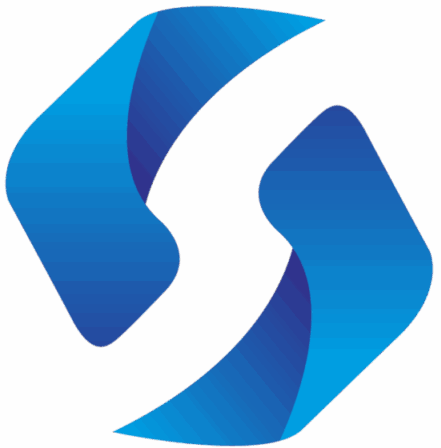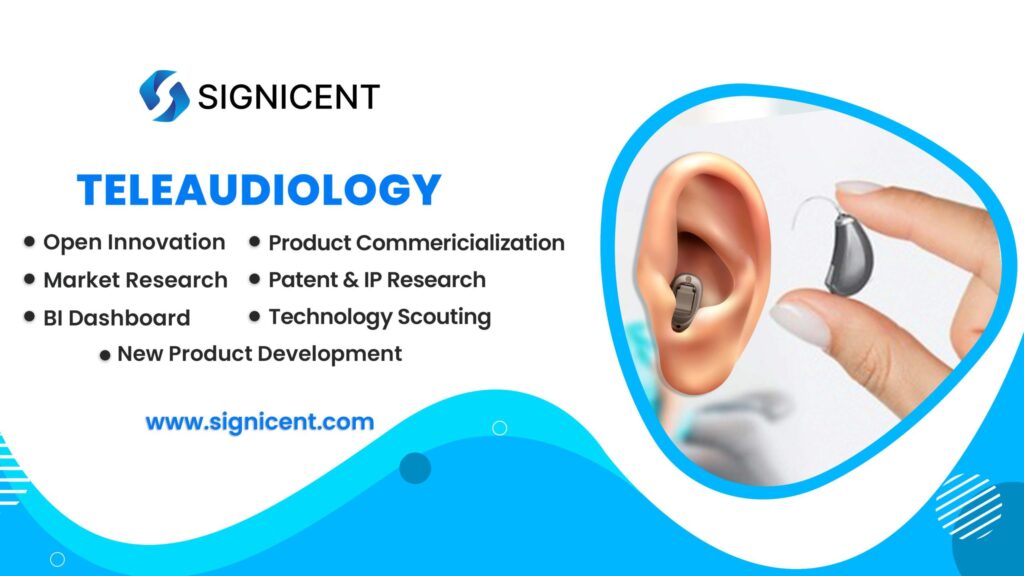The teleaudiology report explores and identifies various innovations in the digital health system industry. Major collaborations and startups emerging with innovative technologies have been discussed. Moreover, some light is shed on key innovation areas like remote audiological care, otoscope module.
Digital Health system for hearing practices or tele-audiology is the utilization of telemedicine/ telehealth to provide audiological services. It may include the full scope of audiological practice. This term was first used by Dr. Gregg Givens in 1999 in reference to a system being developed at East Carolina University, USA. The first internet audiological test was accomplished in 2000 by Givens, Balch, and Keller.
The first transatlantic teleaudiology test was performed in April 2009 when Dr. James Hall tested a patient in South Africa. Since that historic event, the interest in tele-audiology increased significantly.
Delivering Teleaudiology
- Teleaudiology has become a viable approach for delivering care. Asynchronous and synchronous delivery can be used to deliver teleaudiology.
- Hybrid delivery involves using both synchronous and asynchronous modes of delivery. Teleaudiology has been used for otoscopy, audiometry, immittance, cochlear implant programming, and newborn screening.
- Tele-Audiology is widely used by healthcare professionals in the healthcare industry for helping patients remotely.
Global Telehealth Market
The Market is expanding at a CAGR of 28.8% over the forecast period. Global Telehealth Market revenue is expected to expand at a CAGR of 28.8% from US$ 35.85 Bn in 2020 to reach a value of US$ 126.85 Bn by 2025 over the forecast period.
- By Modality, the market is segmented into Real-time Virtual Health, Remote Patient Monitoring, and Others.
- By Component, the market is segmentized into Services, Hardware, and Software.
- By Delivery Mode, the market is segmentized into Web/App-based, Cloud-based, and On-premises.
- By End-user, the market is segmentized into Healthcare Providers, Patients, Employer Groups & Government Organizations, and Payers.
- By Geography, the market is segmented into North America, APAC, Europe, and RoW.
- North-American Region is dominating the Global Telehealth Market.
- Asia-Pacific is anticipated to exhibit a higher growth rate over the forecast period due to the factors such as the population and the growing prevalence of chronic diseases.
Market Segmentation
Market segmentation is an important factor in defining and understanding the target audiences and ideal customers. Precise information about market trends can help in the identification of the regions where the product or service can flourish.
By Modality
The real-time virtual health segment is expected to grow at the highest CAGR during the forecast period. The remote patient monitoring segment is likely to grow due to the growing personal emergency response systems (PERSs).
By Delivery Mode
The market is expected to grow at a healthy rate due to the growing demand for web-based telehealth. The on-premise telehealth delivery model is growing at a slow rate because the majority of end-users prefer either web-based or cloud-based services.
By Component
The services segment accounts for 50% of the market share. The hardware segment is projected to register the highest CAGR during the forecast period.
By End-User
The healthcare providers segment is dominating the market. The patient segment accounted for over 22% of the global telehealth market share.
Geographical Distribution
APAC is emerging as an important region for the growth of the market.
North America accounted for the largest share of the Telehealth Market. The largest share of this region is due to the factors such as the need to reduce healthcare expenditure and the increasing geriatric population. Additionally, the growing need to curtail COVID-19 cases in the U.S. and a growing focus on improving the quality of care delivered to COVID-19 patients are some key factors driving the growth.
Europe
The European market is growing due to favorable regulations and adequate infrastructure. The market is the second-largest market after North America. The U.K. market is one of the largest markets in the European region. Germany to grow steadily during the forecast period.
APAC
The Asia Pacific market is expected to grow at the highest rate during the forecast period, owing to the prevalence of chronic diseases and the overcrowding of hospitals. Populated countries like China and India are expected to drive the market.
RoW
High patient population and increasing healthcare spending are estimated to fuel the growth of the market in Latin America and Middle East & Africa.
Technical Constrain
- Traditional voice and/or video approaches for making a diagnosis remotely suffer from a lack of data concerning the patient’s physiological characteristics
- Medical big data brings different levels of security threats to human life. The security of medical data have brought huge obstacles to the collection, sharing, and effective use of medical big data
- Telemedicine involves a wide range of patients, doctors, hospitals, and other information, and network security is of paramount importance.
Innovative Solutions
- Using otoscope module equipped with a 3D printed macro lens holder (containing appropriate optics) for providing otoscope functionality to the camera of the smartphone
- A medical data security cooperation system based on a blockchain, and belongs to the technical field of medical big data security and utilization
- A data security protection method – Automatically classifying sensitive data from non-sensitive data. Encryption processing is performed on sensitive data.
Remote Audiological Care
Sonava Holdings works in Eaudiology technology that enables remote audiological care. Sonva is working for solutions that provide immediate help to those with hearing loss disabilities. Phonak will allow hearing care professionals to deliver remote audiological care. This new telehealth technology is comprised of a suite of Phonak eSolutions featuring online hearing testing as well as real-time remote hearing aid fitting, programming, and fine-tuning.
Different types of tools are used in this solution for connecting providers with the client. The tools are described below:
- Phonak Hearing Screener: Easy-to-use online tool for anyone who wishes to perform a simple hearing check. It’s free to use and the results can be shared with a local HCP to pre-assess whether the person may benefit from hearing aids. The Phonak Hearing Screener will be continually updated over the coming weeks to provide more frequencies and greater access for HCPs.
- Audiogram Direct: Wireless connectivity between Phonak Marvel hearing aids and virtually any Bluetooth® device using the myPhonak app. software was originally designed to check a client’s hearing during an in-person follow-up session but has now been enhanced to feature remote fitting capabilities, even taking into account the properties of the individual ear, the acoustic coupling, and the chosen hearing aids.
- Phonak Remote Support: Hearing aids remotely fit, programmed, adjusted, and optimized in real-time in the exact environment they’re currently listening in—all via the myPhonak app. During remote sessions, Phonak hearing aids communicate information regarding the client’s acoustic environment back to the hearing care professional.
Innovation in Teleaudiology
The experts of Signicent found the following innovations happening in the field. Medical data security cooperation system based on blockchain. Medical big data brings different levels of security threats to human life. The security of medical data has brought huge obstacles to the collection, sharing, and effective use of medical big data.
A medical data security cooperation system based on a blockchain, and belongs to the technical field of medical big data security and utilization.
•An App client and a server chain of a blockchain and a service platform, including a data encryption module, a blockchain storage module, and a sensitive category attribute data authorization module.
•Sensitive information classifications at any time through the system App client, or securely share the medical record data to the doctor for telemedicine
•When a patient-user wants to perform a telemedicine application, the data encryption module decrypts the electronic medical record ciphertext with the private key of the patient-user, and finally the patient-user passes the data. The encryption module encrypts the medical record from the remote doctor public key obtained from the blockchain storage module and sends it to the remote doctor
Otoscope Module
Traditional voice and/or video approaches for making a diagnosis remotely suffer from a lack of data concerning the patient’s physiological characteristics.
Using otoscope module equipped with a 3D printed macro lens holder (containing appropriate optics) for providing otoscope functionality to the camera of the smartphone
•Advanced software for prompting the user to report their symptoms and make a diagnosis, and for prompting the patient to use one or more sensors to collect the desired physiological data.
•The smartphone runs a smartphone app that controls the operation of the smartphone, and which controls the plurality of modules connected to the smartphone, the modules can acquire data from the patient, and the smartphone can transmit that data to a remote healthcare provider or healthcare database
Product Development
Phonak Remote Support™ App: The latest models of the Phonak Marvel are telehealth compatible as they connect via the Phonak Remote Support™ App. This smartphone app connects the Marvel hearing aids to the provider, allowing them to make real-time adjustments from virtually anywhere.
Signia app: The Signia app gives you everything you need to enjoy your hearing aids to the full, and all tailored to your personal preferences: remote control, audio streaming, and remote support. All you need is your smartphone.
WIDEX REMOTE CARE: Use Compass GPS to establish a video connection and get hearing aid control via WIDEX REMOTE LINK. It’s easy, and it works for our entire range of connected hearing aids. When clients successfully get the support they need on-the-spot, they are likely to feel more confident and happier with their hearing aid.
Transformative Companies
- Amwell is a telehealth platform that providers, insurers, patients, and innovators deliver more affordable, higher quality care.
- MDLIVE is a telehealth provider of online and on-demand healthcare delivery services and software.
- With KRY’s app, you can meet a doctor or therapist at any time or location, using your phone or tablet.
Teladoc To Acquire Livongo
Teladoc Health, Inc. is multinational telemedicine and virtual healthcare company based in the United States. Primary services include Telehealth, medical opinions, AI and analytics, and licensable platform services. Livongo is a holistic program that empowers people with health challenges to live better and do more.
“Teladoc Health (TDOC), the global leader in virtual care, and Livongo (LVGO), the leading Applied Health Signals company – today announced that they have entered into a definitive merger agreement. This merger represents a transformational opportunity to improve the delivery, access, and experience of healthcare for consumers around the world.
The highly complementary organizations will combine to create substantial value across the healthcare ecosystem, enabling clients everywhere to offer high quality, personalized, technology-enabled longitudinal care that improves outcomes and lowers costs across the full spectrum of health.
Walmart Acquired Telehealth Company MeMD
Walmart Inc. is an American multinational retail corporation that operates a chain of hypermarkets, discount department stores, and grocery stores from the United States, headquartered in Bentonville, Arkansas. MeMD originated as a Telehealth company that aimed to provide individuals and businesses with on-demand, online care for common illnesses and injuries. Our slogan was Healthcare Virtually Everywhere, and our goal was to disrupt the healthcare space by delivering quick, affordable, and convenient access to medical care and , nationwide.
This acquisition will, over the coming months, allow Walmart Health to provide access to virtual care across the nation including urgent, behavioral, and primary care, complementing our in-person Walmart Health centers. Our focus on consumer engagement improved health outcomes and early, equitable access remains the cornerstone of quality health care that can help lower overall health care costs across all populations.
Recent Report
- Future of Cooking with Nanotechnology: How Smart Kitchen Technology Is Transforming Modern Kitchens
- The Hidden Genius Behind Your Devices – Gurtej Singh Sandhu’s Innovations That Fuel Our Digital World
- Hydrogen Fuel Cells — Powering a Cleaner Future of Energy & Mobility
- Antibacterial & Antiviral Technologies for Personal and Home Care
- Why Waterless Beauty Innovations Are the Next Big Thing in Skincare


